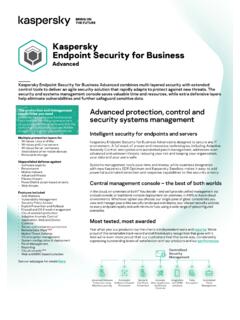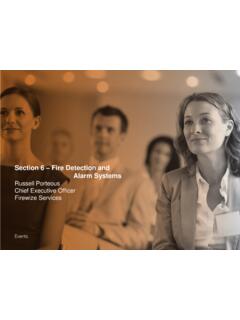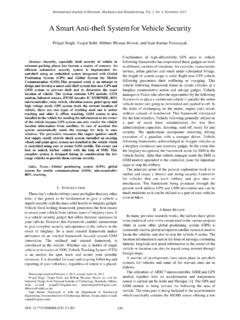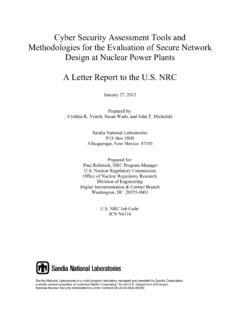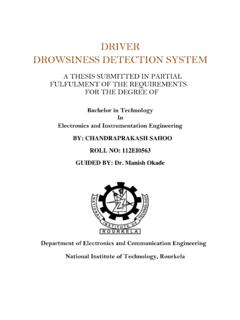Transcription of Machine Learning for Malware Detection
1 Machine Learning for Malware DetectionLearn more on #bringonthefutureContentsBasic approaches to Malware Detection 1 Machine Learning : concepts and definitions 2 Unsupervised Learning 2 Supervised Learning 2 Deep Learning 3 Machine Learning application specifics in cybersecurity 4 Large representative datasets are required 4 The trained model has to be interpretable 4 False positive rates must be extremely low 4 Algorithms must allow us to quickly adapt them to Malware writers counteractions 5 Kaspersky Lab Machine Learning application 6 Detecting new Malware in pre-execution with similarity hashing 6 Two-stage pre-execution Detection on users computers with similarity hash mapping combined with decision trees ensemble 8 Deep Learning against rare attacks 10 Deep Learning in post-execution behavior Detection 10 Applications in the infrastructure 12 Clustering the incoming stream of objects 12 Distillation.
2 Packing the updates 13 Summary 141 Basic approaches to Malware detectionAn efficient, robust and scalable Malware recognition module is the key component of every cybersecurity product. Malware recognition modules decide if an object is a threat, based on the data they have collected on it. This data may be collected at different phases: Pre-execution phase data is anything you can tell about a file without executing it. This may include executable file format descriptions, code descriptions, binary data statistics, text strings and information extracted via code emulation and other similar data. Post-execution phase data conveys information about behavior or events caused by process activity in a the early part of the cyber era, the number of Malware threats was relatively low, and simple manually created pre-execution rules were often enough to detect threats.
3 The rapid rise of the Internet and the ensuing growth in Malware meant that manually created Detection rules were no longer practical - and new, advanced protection technologies were companies turned to Machine Learning , an area of computer science that had been used successfully in image recognition, searching and decision-making, to augment their Malware Detection and , Machine Learning boosts Malware Detection using various kinds of data on host, network and cloud-based anti- Malware Learning : concepts and definitionsAccording to the classic definition given by AI pioneer Arthur Samuel, Machine Learning is a set of methods that gives computers the ability to learn without being explicitly programmed .In other words, a Machine Learning algorithm discovers and formalizes the principles that underlie the data it sees. With this knowledge, the algorithm can reason the properties of previously unseen samples.
4 In Malware Detection , a previously unseen sample could be a new file. Its hidden property could be Malware or benign. A mathematically formalized set of principles underlying data properties is called the model. Machine Learning has a broad variety of approaches that it takes to a solution rather than a single method. These approaches have different capacities and different tasks that they suit Machine Learning approach is unsupervised Learning . In this setting, we are given only a data set without the right answers for the task. The goal is to discover the structure of the data or the law of data generation. One important example is clustering. Clustering is a task that includes splitting a data set into groups of similar objects. Another task is representation Learning this includes building an informative feature set for objects based on their low-level description (for example, an autoencoder model).
5 Machine Learning Methods for Malware DetectionIn this paper, we summarize our extensive experience using Machine Learning to build advanced protection for our Learning 2 Large unlabeled datasets are available to cybersecurity vendors and the cost of their manual labeling by experts is high this makes unsupervised Learning valuable for threat Detection . Clustering can help to optimize efforts for the manual labeling of new samples. With informative embedding, we can decrease the number of labeled objects needed for the next Machine Learning approach in our pipeline: supervised Learning is a setting that is used when both the data and the right answers for each object are available. The goal is to fit the model that will produce the right answers for new objects. Supervised Learning consists of two stages: Training a model and fitting a model to available training data.
6 Applying the trained model to new samples and obtaining task: we are given a set of objects each object is represented with feature set X each object is mapped to the right answer or labeled as YThis training information is utilized during the training phase, when we search for the best model that will produce the correct label Y for previously unseen objects given the feature set X. In the case of Malware Detection , X could be some features of file content or behavior, for instance, file statistics and a list of used API functions. Labels Y could be Malware or benign, or even a more precise classification, such as a virus, Trojan-Downloader or the training phase, we need to select a family of models, for example, neural networks or decision trees. Usually, each model in a family is determined by its parameters. Training means that we search for the model from the selected family with a particular set of parameters that gives the most accurate answers for the trained model over the set of reference objects according to a particular metric.
7 In other words, we learn the optimal parameters that define valid mapping from X to we have trained a model and verified its quality, we are ready for the next phase applying the model to new objects. In this phase, the type of the model and its parameters do not change. The model only produces predictions. In the case of Malware Detection , this is the protection phase. Vendors often deliver a trained model to users where the product makes decisions based on model predictions autonomously. Mistakes can cause devastating consequences for a user for example, removing an OS driver. It is crucial for the vendor to select a model family properly. The vendor must use an efficient training procedure to find the model with a high Detection rate and a low false positive phaseProcessingby a predictive modelModel decisionUnknown executableProtection phaseMalicious / BenignBenignexecutablesTrainingPredictiv e modelMalicious executablesMachine Learning : Detection algorithm lifecycleSupervised learning3 Deep Learning is a special Machine Learning approach that facilitates the extraction of features of a high level of abstraction from low-level data.
8 Deep Learning has proven successful in computer vision, speech recognition, natural language processing and other tasks. It works best when you want the Machine to infer high-level meaning from low-level data. For image recognition challenges, like ImageNet, deep Learning -based approaches already surpass is natural that cybersecurity vendors tried to apply deep Learning for recognizing Malware from low-level data. A deep Learning model can learn complex feature hierarchies and incorporate diverse steps of Malware Detection pipeline into one solid model that can be trained end-to-end, so that all of the components of the model are learned Learning application specifics in cybersecurityUser products that implement Machine Learning make decisions autonomously. The quality of the Machine Learning model impacts the user system performance and its state.
9 Because of this, Machine Learning -based Malware Detection has specifics. It is important to emphasize the data-driven nature of this approach. A created model depends heavily on the data it has seen during the training phase to determine which features are statistically relevant for predicting the correct s look at why making a representative data set is so important. Imagine we collect a training set, and we overlook the fact that occasionally all files larger than 10 MB are all Malware and not benign (which is certainly not true for real world files). While training, the model will exploit this property of the dataset, and will learn that any file larger than 10 MB is Malware . It will use this property for Detection . When this model is applied to real world data, it will produce many false positives. To prevent this outcome, we needed to add benign files with larger sizes to the training set.
10 Then, the model will not rely on an erroneous data set this, we must train our models on a data set that correctly represents the conditions where the model will be working in the real world. This makes the task of collecting a representative dataset crucial for Machine Learning to be successful. Most of the model families used currently, like deep neural networks, are called black box models. Black box models are given the input X, and they will produce Y through a complex sequence of operations that can hardly be interpreted by a human. This could pose a problem in real-life applications. For example, when a false alarm occurs, and we want to understand why it happened, we ask whether it was a problem with a training set or the model itself. The interpretability of a model determines how easy it will be for us to manage it, assess its quality and correct its operation.


